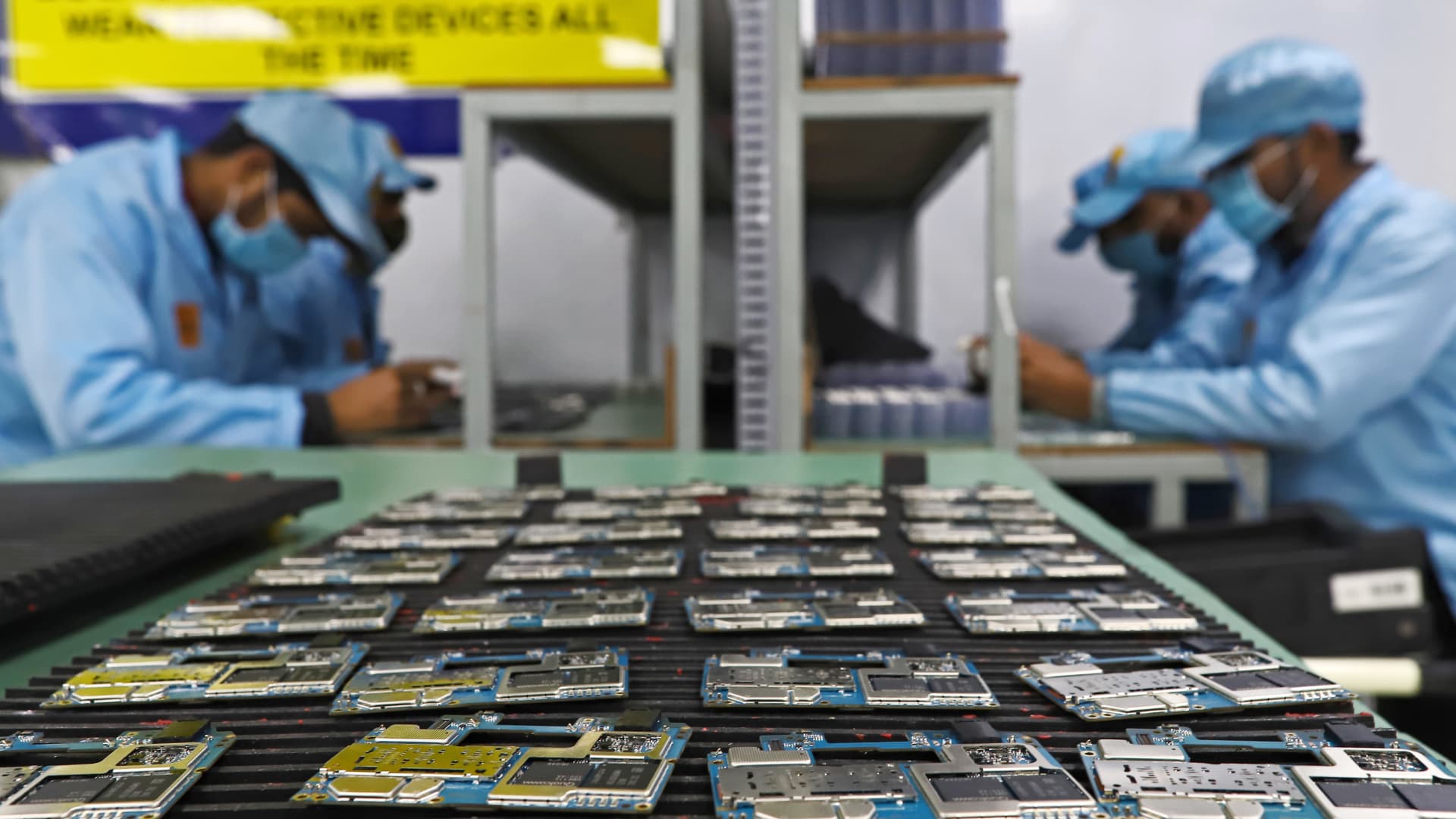Workers assembles smartphones at Dixon Technologies factory in Uttar Pradesh, India, on Thursday, Jan. 28, 2021.
Bloomberg | Bloomberg | Getty Images
India wants to be among the world’s top five semiconductor producers in the next five years, said Ashwini Vaishnaw, minister of electronics and information technology, railways and communications.
The chip industry “is a very complex market, and global value chains and global supply chains are extremely complex in the current context,” Vaishnaw said on CNBC’s Street Signs Asia on Friday. “We think in the next five years, we would be among the top five semiconductor nations in the world.”
As of December, Taiwan holds about 46% of global semiconductor foundry capacity, followed by China (26%), South Korea (12%), the U.S. (6%) and Japan (2%), according to market intelligence firm TrendForce.
India will stand to benefit as more companies look to reduce reliance on China as U.S.-China tensions show no signs of ending soon.
He said India sees itself as a “trusted value chain partner” for electronic device manufacturers, industrial and defense electronics, power electronics — “practically every electronics manufacturer, which requires semiconductors to be designed… and manufactured.”
“Some people call it ‘friendshoring.’ I call it ‘trust shoring’ because there is a global trust in India,” Vaishnaw said.
On Thursday, U.S. chip giant Qualcomm opened a new design center in Chennai. The facility will focus on wireless technology design and create 1,600 jobs in the country.
“We started investing in India before it was popular. We have been building a presence in India for more than a decade now,” Qualcomm CEO told CNBC affiliate CNBC TV-18. “A lot of our chips are designed in India, and that presence in India is also creating opportunities for a number of Indian companies.”
Last week, Prime Minister Narendra Modi inaugurated three semiconductor plants. One of those plants is a joint venture between Tata Electronics and Taiwan’s Powerchip Semiconductor Manufacturing Corp. PSMC Chairman Frank Huang told the Economic Times the goal is to create India’s first semiconductor chip by 2026
“Made in India chips manufactured in India will help create a strong and significant presence for India in global value chains — it will make India a semicon hub for the world,” Union Minister Rajeev Chandrasekhar said in a press release.
Vaishnaw seemed unfazed when asked about investors expressing concern that India is still behind in its semiconductor manufacturing game and has plenty of catching up to do.
The minister predicted that the global semiconductor sector will be worth a trillion dollars within the next seven years. due to a large talent pool and the country’s focus on ramping up its manufacturing capabilities.
“This kind of growth will require close to a million more semiconductor engineers. Where is the talent pool? Where is that ecosystem for handling the complexity of this magnitude? It’s there in India,” he said.
“This is absolutely the right time to be in the semiconductor industry and we’ve very rapidly gained the confidence of the entire global industry,” the minister added.
Apple supplier Foxconn, known as Hon Hai Precision Industry, announced in November that it plans to invest more than $1.5 billion in India to fulfill its “operational needs.”
“Globally, all the companies look at India as a natural destination for the next investment decision,” Vaishnaw claimed, confirming recent reports that the government is reviewing semiconductor proposals totaling to $21 billion.







